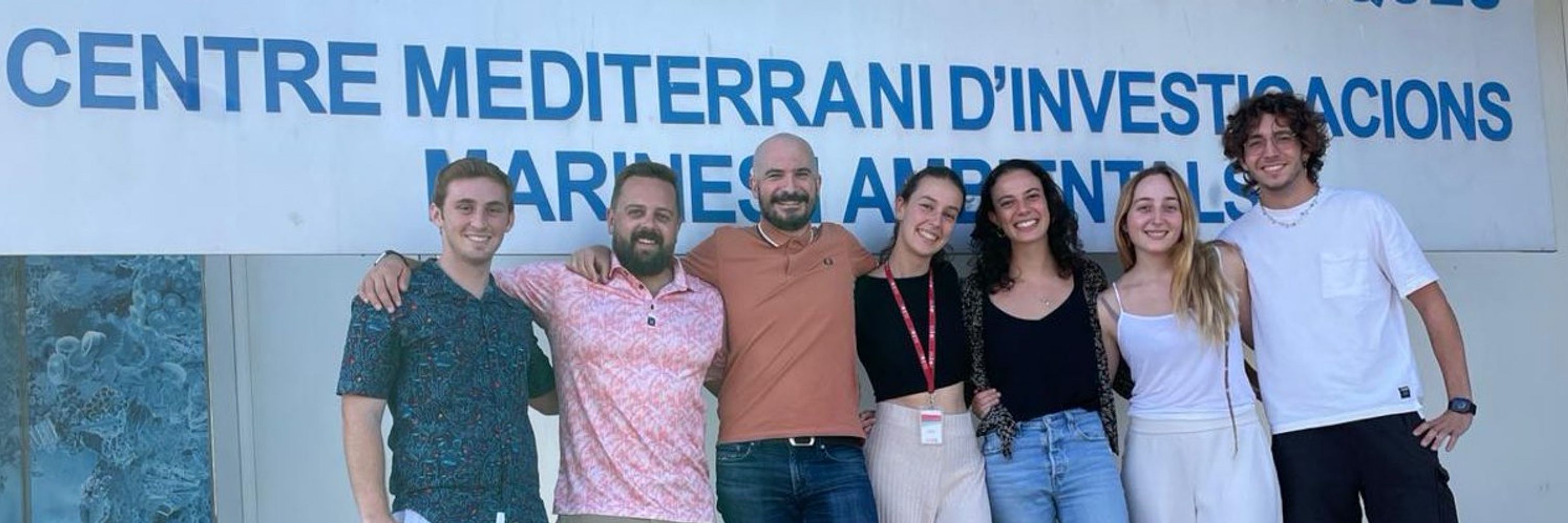
del Campo Lab
@delcampolab.bsky.social
Microbial Ecology and Evolution Lab at IBE Barcelona led by @fonamental.bsky.social. Studying marine animal holobionts🦠🪸🌊
Thank you everyone for a great congress!🦠🌊😊 @same18-bcn.bsky.social



October 6, 2025 at 8:41 PM
Thank you everyone for a great congress!🦠🌊😊 @same18-bcn.bsky.social
. @joanakrause.bsky.social gave a presentation on her project “Describing the diversity and global distribution of plastid-bearing coral symbionts re-using published microbiome data”


October 6, 2025 at 8:41 PM
. @joanakrause.bsky.social gave a presentation on her project “Describing the diversity and global distribution of plastid-bearing coral symbionts re-using published microbiome data”
. @rociomozo.bsky.social presented a poster on “Phylogenomics of Coral Photosymbionts and their Free-Living Relatives” (her Master’s project)


October 6, 2025 at 8:41 PM
. @rociomozo.bsky.social presented a poster on “Phylogenomics of Coral Photosymbionts and their Free-Living Relatives” (her Master’s project)
Reposted by del Campo Lab
This effort was a 'tour de force' only made possible by my incredible lab @ambonacolta.bsky.social and @fonamental.bsky.social. Absolutely thrilled to get this part of my Ph.D. dissertation out, thank you everyone involved!

August 7, 2025 at 5:02 PM
This effort was a 'tour de force' only made possible by my incredible lab @ambonacolta.bsky.social and @fonamental.bsky.social. Absolutely thrilled to get this part of my Ph.D. dissertation out, thank you everyone involved!
Reposted by del Campo Lab
Lastly, we explored microbiome structure 🦠 through time. Broadly, the microbial composition is largely stable through time, with notable taxon-specific changes through day/night light cycles. During the day carbohydrate catabolizers show enrichment, while night hours feature methylotrophs.


August 7, 2025 at 5:02 PM
Lastly, we explored microbiome structure 🦠 through time. Broadly, the microbial composition is largely stable through time, with notable taxon-specific changes through day/night light cycles. During the day carbohydrate catabolizers show enrichment, while night hours feature methylotrophs.
Reposted by del Campo Lab
Similar to the host, the symbiont Breviolum showed diel regulated transcription, although more subtle. Time-specific functions were recovered, showing metabolite transfer and nitrogen/carbohydrate metabolism through daytime, while cellular division and reorganization/turnover during the dark hours.

August 7, 2025 at 5:02 PM
Similar to the host, the symbiont Breviolum showed diel regulated transcription, although more subtle. Time-specific functions were recovered, showing metabolite transfer and nitrogen/carbohydrate metabolism through daytime, while cellular division and reorganization/turnover during the dark hours.
Reposted by del Campo Lab
In the coral host, we observed dawn as a molecular surge in RNA metabolism 🧬, midday exhibits high phosphate regulation 🔋, dusk reflects lipid & amino acid metabolism ♻️, and midnight shows mRNA catabolism & mitochondrial reorganization 🗂️. Most striking, we recovered ~30% transcripts as rhythmic.

August 7, 2025 at 5:02 PM
In the coral host, we observed dawn as a molecular surge in RNA metabolism 🧬, midday exhibits high phosphate regulation 🔋, dusk reflects lipid & amino acid metabolism ♻️, and midnight shows mRNA catabolism & mitochondrial reorganization 🗂️. Most striking, we recovered ~30% transcripts as rhythmic.
Reposted by del Campo Lab
10/
Huge thanks to this amazing team! @fonamental.bsky.social @polcapdevila.bsky.social @elpiratavell.bsky.social @medrecover.bsky.social over.bsky.social @icmcsic.bsky.social @szndohrn.bsky.social @ub.edu @ibe-barcelona.bsky.social
#MedCalRes @ageinves.bsky.social @cienciagob.bsky.social
Huge thanks to this amazing team! @fonamental.bsky.social @polcapdevila.bsky.social @elpiratavell.bsky.social @medrecover.bsky.social over.bsky.social @icmcsic.bsky.social @szndohrn.bsky.social @ub.edu @ibe-barcelona.bsky.social
#MedCalRes @ageinves.bsky.social @cienciagob.bsky.social
July 31, 2025 at 1:47 PM
Reposted by del Campo Lab
9/
Bryozoans are key habitat-formers, yet often overlooked in climate research.
Our work shows they’re at risk under future ocean conditions.
🌊 We need more long-term, multi-stressor studies in natural settings. Stay tuned for the ongoing HOLOCHANGE and MedAcidWarm projects!
Bryozoans are key habitat-formers, yet often overlooked in climate research.
Our work shows they’re at risk under future ocean conditions.
🌊 We need more long-term, multi-stressor studies in natural settings. Stay tuned for the ongoing HOLOCHANGE and MedAcidWarm projects!
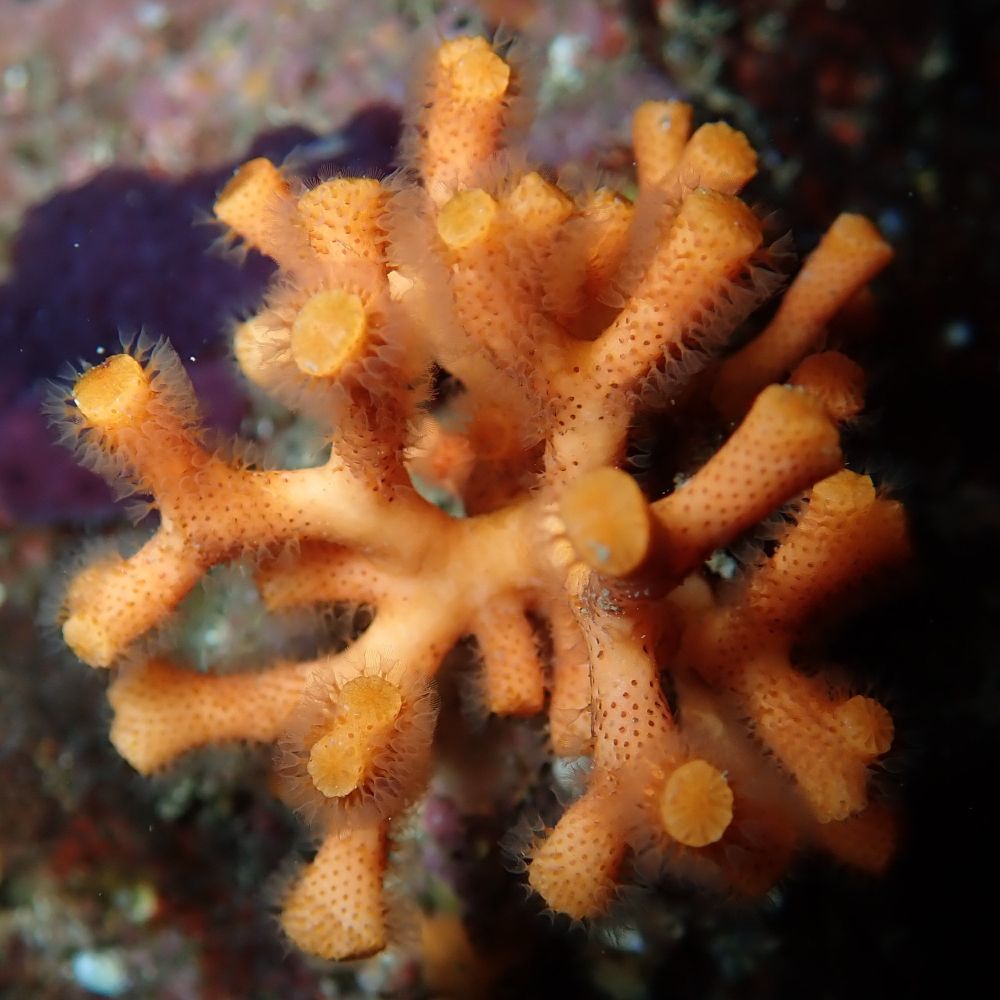
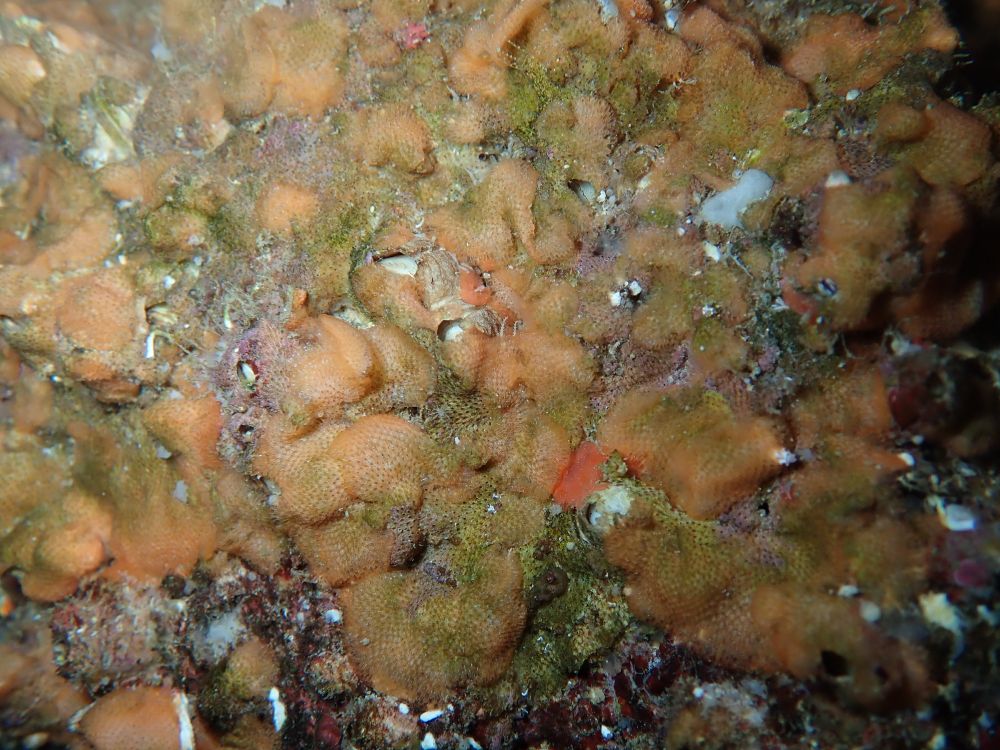
July 31, 2025 at 1:47 PM
9/
Bryozoans are key habitat-formers, yet often overlooked in climate research.
Our work shows they’re at risk under future ocean conditions.
🌊 We need more long-term, multi-stressor studies in natural settings. Stay tuned for the ongoing HOLOCHANGE and MedAcidWarm projects!
Bryozoans are key habitat-formers, yet often overlooked in climate research.
Our work shows they’re at risk under future ocean conditions.
🌊 We need more long-term, multi-stressor studies in natural settings. Stay tuned for the ongoing HOLOCHANGE and MedAcidWarm projects!
Reposted by del Campo Lab
8/
This is the first study to document long-term microbiome and skeletal responses to combined ocean acidification & warming in bryozoans in the wild.
We reveal:
✅ Complex, species-specific strategies
⚠️ Signs of vulnerability under future ocean conditions
This is the first study to document long-term microbiome and skeletal responses to combined ocean acidification & warming in bryozoans in the wild.
We reveal:
✅ Complex, species-specific strategies
⚠️ Signs of vulnerability under future ocean conditions
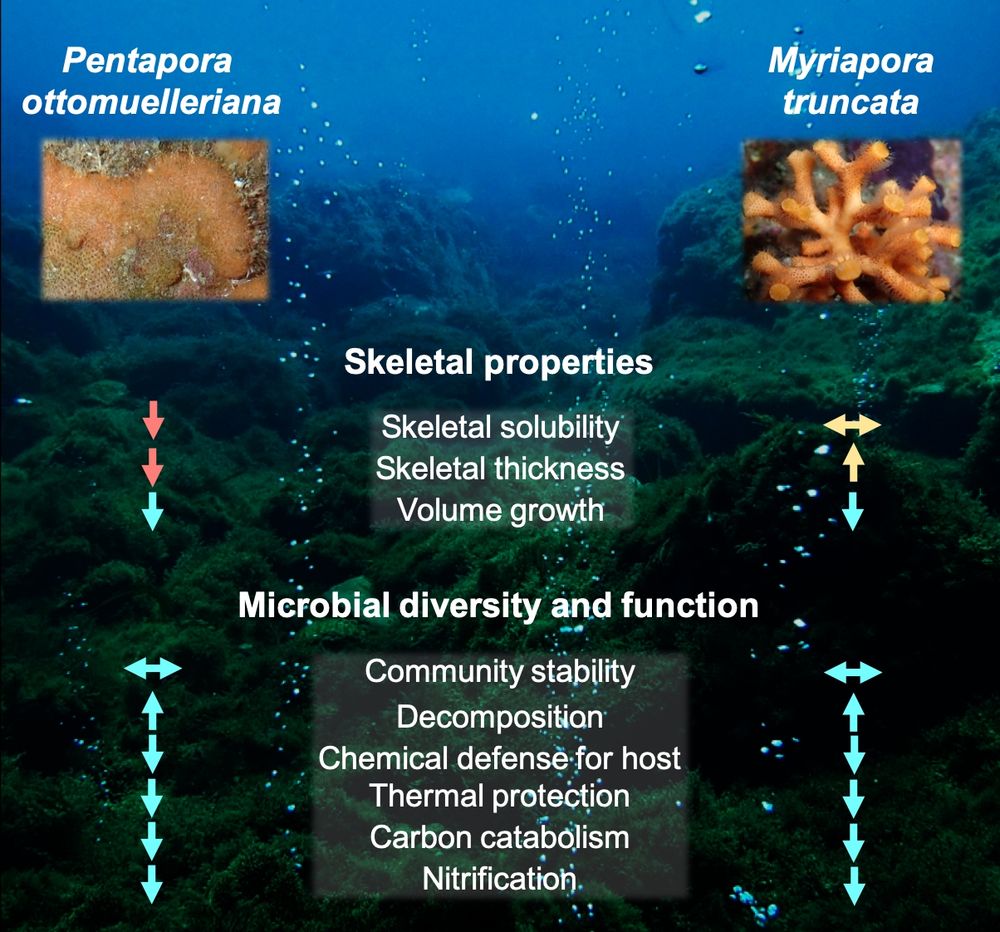
July 31, 2025 at 1:47 PM
8/
This is the first study to document long-term microbiome and skeletal responses to combined ocean acidification & warming in bryozoans in the wild.
We reveal:
✅ Complex, species-specific strategies
⚠️ Signs of vulnerability under future ocean conditions
This is the first study to document long-term microbiome and skeletal responses to combined ocean acidification & warming in bryozoans in the wild.
We reveal:
✅ Complex, species-specific strategies
⚠️ Signs of vulnerability under future ocean conditions
Reposted by del Campo Lab
7/
What about long-term effects?
We monitored Pentapora populations over 5 years:
📉 Bryozoan cover declined
☠️ Necrosis increased
🌡️ Warming & acidification together accelerated mortality
What about long-term effects?
We monitored Pentapora populations over 5 years:
📉 Bryozoan cover declined
☠️ Necrosis increased
🌡️ Warming & acidification together accelerated mortality
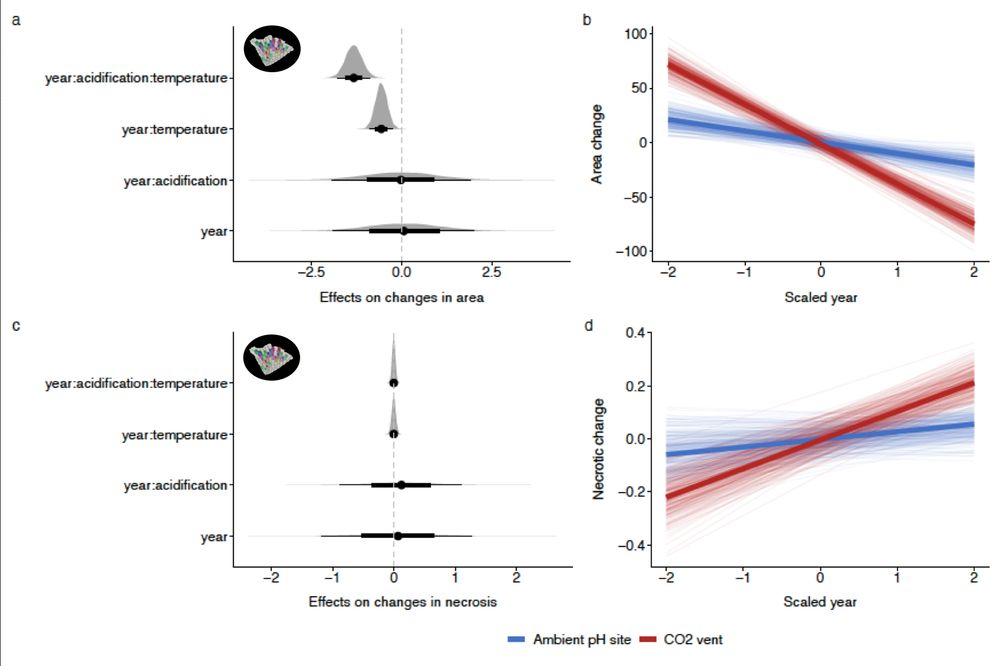
July 31, 2025 at 1:47 PM
7/
What about long-term effects?
We monitored Pentapora populations over 5 years:
📉 Bryozoan cover declined
☠️ Necrosis increased
🌡️ Warming & acidification together accelerated mortality
What about long-term effects?
We monitored Pentapora populations over 5 years:
📉 Bryozoan cover declined
☠️ Necrosis increased
🌡️ Warming & acidification together accelerated mortality
Reposted by del Campo Lab
6/
But not all are good news...
We also observed:
📉 Loss of key microbial genera
☠️Rise of opportunists & anaerobes
These microbial shifts may signal early dysbiosis — an early warning of declining host health.
But not all are good news...
We also observed:
📉 Loss of key microbial genera
☠️Rise of opportunists & anaerobes
These microbial shifts may signal early dysbiosis — an early warning of declining host health.

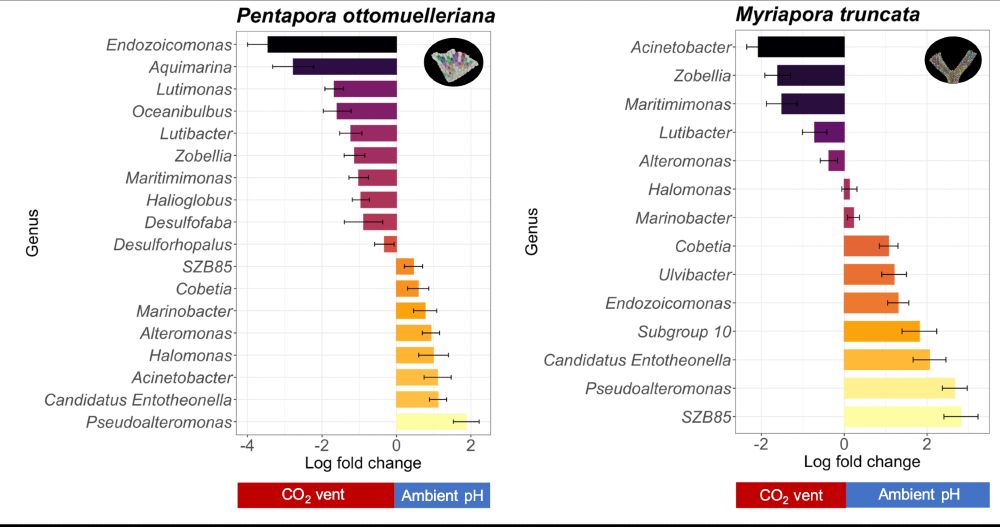
July 31, 2025 at 1:47 PM
6/
But not all are good news...
We also observed:
📉 Loss of key microbial genera
☠️Rise of opportunists & anaerobes
These microbial shifts may signal early dysbiosis — an early warning of declining host health.
But not all are good news...
We also observed:
📉 Loss of key microbial genera
☠️Rise of opportunists & anaerobes
These microbial shifts may signal early dysbiosis — an early warning of declining host health.
Reposted by del Campo Lab
5/
🦠 Microbial communities:
We found species-specific core microbiomes, conserved across both pH conditions.
This stability suggests potential acclimatization capacity in both species despite environmental stress.
🦠 Microbial communities:
We found species-specific core microbiomes, conserved across both pH conditions.
This stability suggests potential acclimatization capacity in both species despite environmental stress.
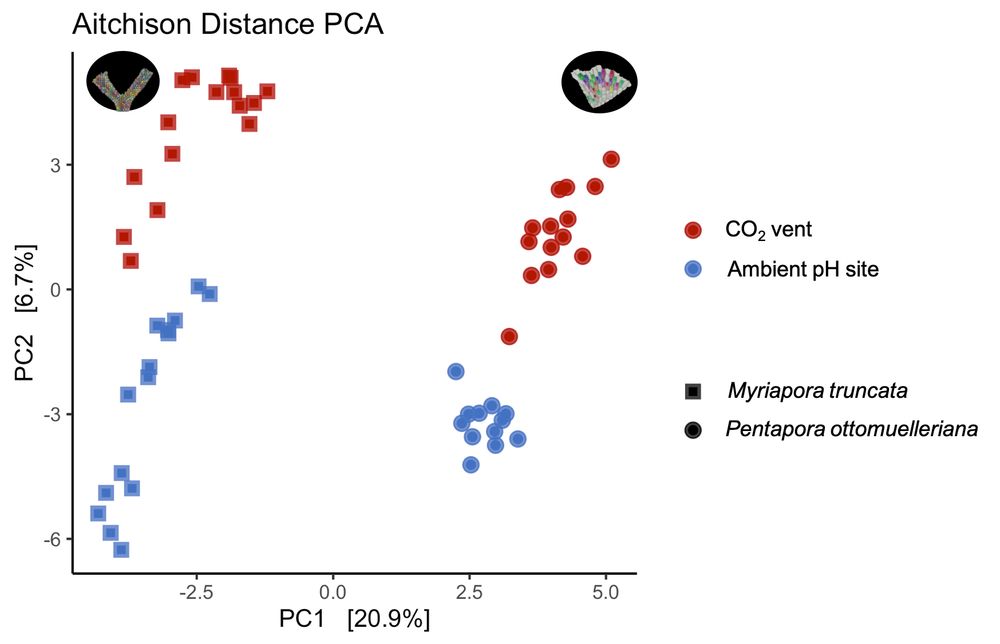
July 31, 2025 at 1:47 PM
5/
🦠 Microbial communities:
We found species-specific core microbiomes, conserved across both pH conditions.
This stability suggests potential acclimatization capacity in both species despite environmental stress.
🦠 Microbial communities:
We found species-specific core microbiomes, conserved across both pH conditions.
This stability suggests potential acclimatization capacity in both species despite environmental stress.
Reposted by del Campo Lab
4/
🧱 Mineral & skeletal structure:
The two species showed opposing strategies to low pH.
🦪 P. ottomuelleriana reduced Mg-calcite & zooid volume
🪸 M. truncata thickened its skeleton
→ Different energy trade-offs to maintain calcification under stress
🧱 Mineral & skeletal structure:
The two species showed opposing strategies to low pH.
🦪 P. ottomuelleriana reduced Mg-calcite & zooid volume
🪸 M. truncata thickened its skeleton
→ Different energy trade-offs to maintain calcification under stress
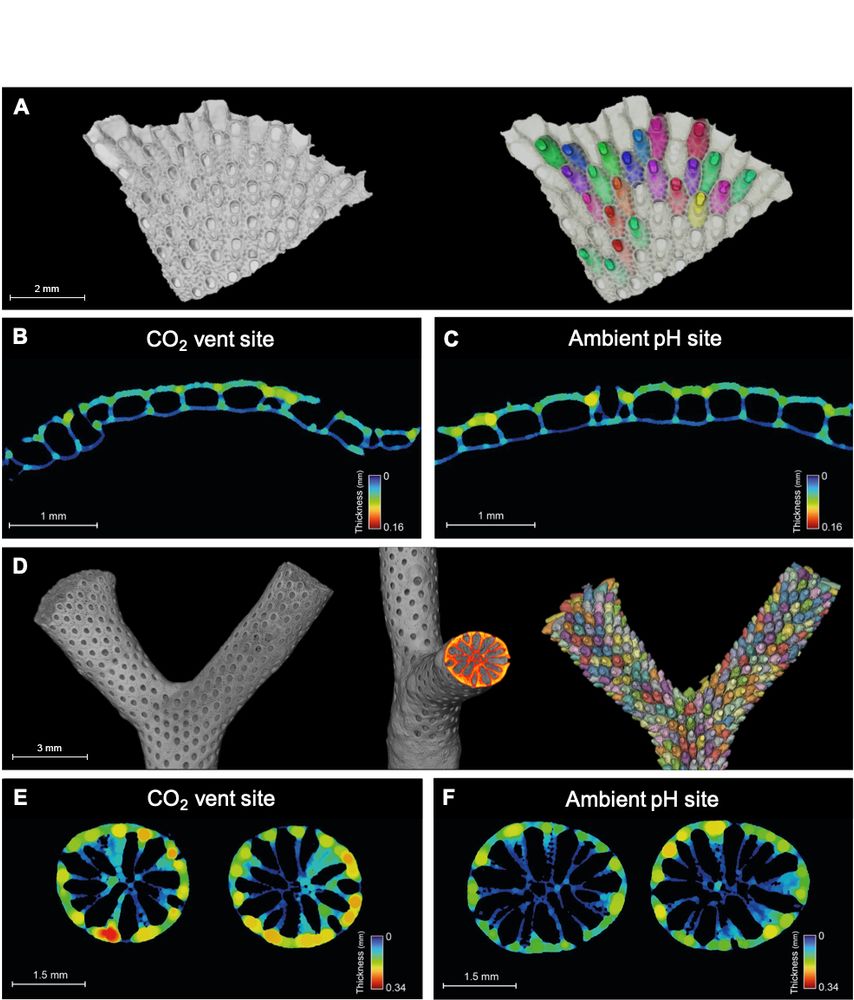
July 31, 2025 at 1:47 PM
4/
🧱 Mineral & skeletal structure:
The two species showed opposing strategies to low pH.
🦪 P. ottomuelleriana reduced Mg-calcite & zooid volume
🪸 M. truncata thickened its skeleton
→ Different energy trade-offs to maintain calcification under stress
🧱 Mineral & skeletal structure:
The two species showed opposing strategies to low pH.
🦪 P. ottomuelleriana reduced Mg-calcite & zooid volume
🪸 M. truncata thickened its skeleton
→ Different energy trade-offs to maintain calcification under stress
Reposted by del Campo Lab
3/
We focused on two species:
🦪 Pentapora ottomuelleriana (fast-growing, encrusting)
🪸 Myriapora truncata (slow-growing, erect)
They naturally occur inside & outside a Mediterranean CO₂ vent. 🌋
We also used 3D micro-CT scans to visualize how their skeletons change.
We focused on two species:
🦪 Pentapora ottomuelleriana (fast-growing, encrusting)
🪸 Myriapora truncata (slow-growing, erect)
They naturally occur inside & outside a Mediterranean CO₂ vent. 🌋
We also used 3D micro-CT scans to visualize how their skeletons change.
July 31, 2025 at 1:47 PM
3/
We focused on two species:
🦪 Pentapora ottomuelleriana (fast-growing, encrusting)
🪸 Myriapora truncata (slow-growing, erect)
They naturally occur inside & outside a Mediterranean CO₂ vent. 🌋
We also used 3D micro-CT scans to visualize how their skeletons change.
We focused on two species:
🦪 Pentapora ottomuelleriana (fast-growing, encrusting)
🪸 Myriapora truncata (slow-growing, erect)
They naturally occur inside & outside a Mediterranean CO₂ vent. 🌋
We also used 3D micro-CT scans to visualize how their skeletons change.
Reposted by del Campo Lab
2/
Why bryozoans?
🪸 They build reef-like structures
🌍 They're widespread + ecologically important
🦠 But largely understudied—especially their microbiomes!
We studied them at a volcanic CO₂ vent & a control site in Ischia Island, a "time machine" for future oceans.
Why bryozoans?
🪸 They build reef-like structures
🌍 They're widespread + ecologically important
🦠 But largely understudied—especially their microbiomes!
We studied them at a volcanic CO₂ vent & a control site in Ischia Island, a "time machine" for future oceans.
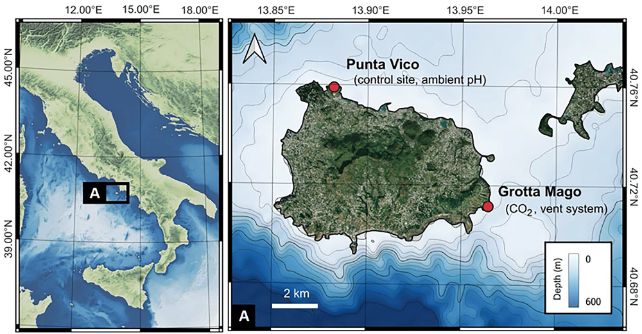
July 31, 2025 at 1:47 PM
2/
Why bryozoans?
🪸 They build reef-like structures
🌍 They're widespread + ecologically important
🦠 But largely understudied—especially their microbiomes!
We studied them at a volcanic CO₂ vent & a control site in Ischia Island, a "time machine" for future oceans.
Why bryozoans?
🪸 They build reef-like structures
🌍 They're widespread + ecologically important
🦠 But largely understudied—especially their microbiomes!
We studied them at a volcanic CO₂ vent & a control site in Ischia Island, a "time machine" for future oceans.
July 24, 2025 at 5:21 PM
That’s all for our acid-loving protist of the week. It truly exemplifies everything heavy metal is about: the power of friendship (or in other words, holobionts). Gather with us for the next #MidweekMicrobe, just like microbes in biofilms! lml 🦠 🍄 🧫
July 24, 2025 at 5:21 PM
That’s all for our acid-loving protist of the week. It truly exemplifies everything heavy metal is about: the power of friendship (or in other words, holobionts). Gather with us for the next #MidweekMicrobe, just like microbes in biofilms! lml 🦠 🍄 🧫
Notably, an isolate from an AMD site in Canada was found to boost its tolerance to low pH by associating with an antibiotic-producing fungus and an acidophilic bacterium — forming a truly heavy-metal holobiont known as the FAB (fungus, alga, bacterium) consortium.
July 24, 2025 at 5:21 PM
Notably, an isolate from an AMD site in Canada was found to boost its tolerance to low pH by associating with an antibiotic-producing fungus and an acidophilic bacterium — forming a truly heavy-metal holobiont known as the FAB (fungus, alga, bacterium) consortium.
Some of the mechanisms this alga uses to cope with heavy metals include supplementation of chlorophyll with other divalent cations (in place of Mg²⁺), and internal compartmentalization via precipitation or granule formation.
📷 Adapted from Brake et al.
📷 Adapted from Brake et al.
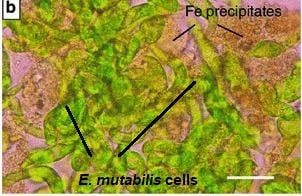
July 24, 2025 at 5:21 PM
Some of the mechanisms this alga uses to cope with heavy metals include supplementation of chlorophyll with other divalent cations (in place of Mg²⁺), and internal compartmentalization via precipitation or granule formation.
📷 Adapted from Brake et al.
📷 Adapted from Brake et al.

